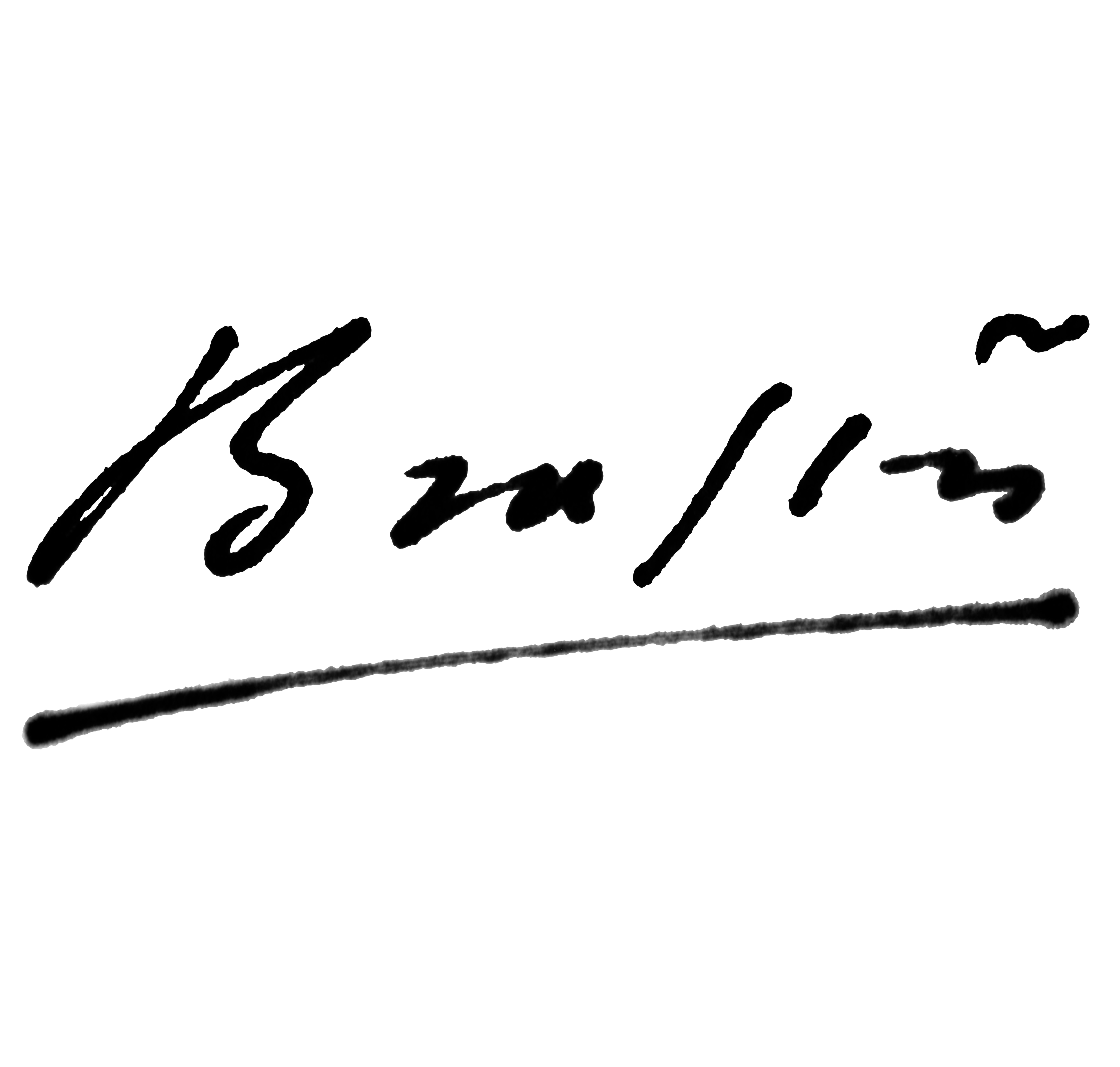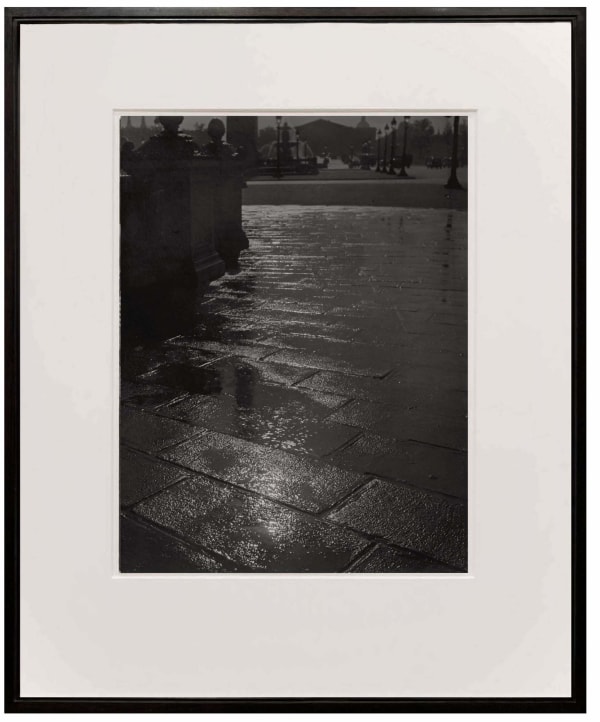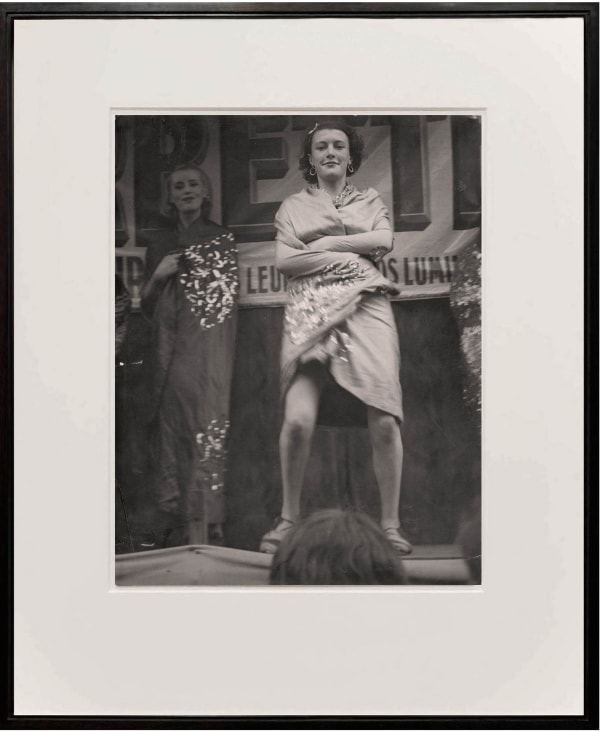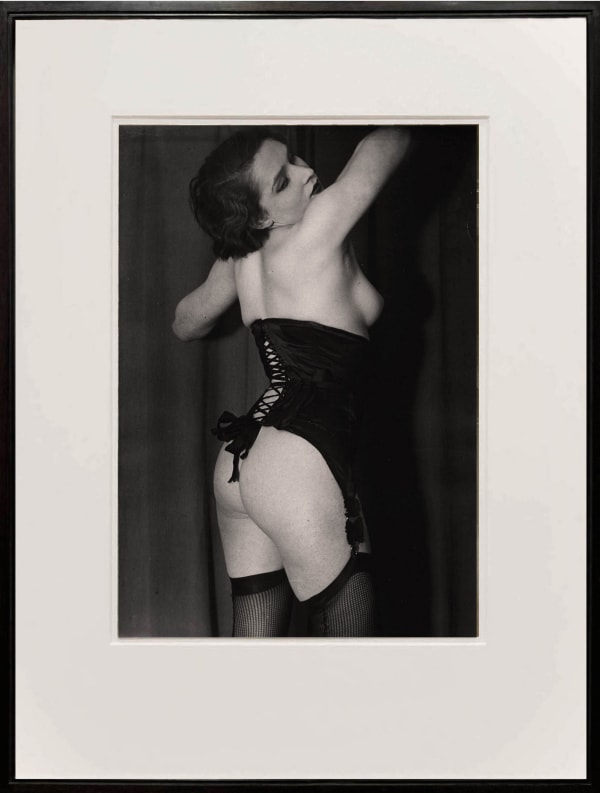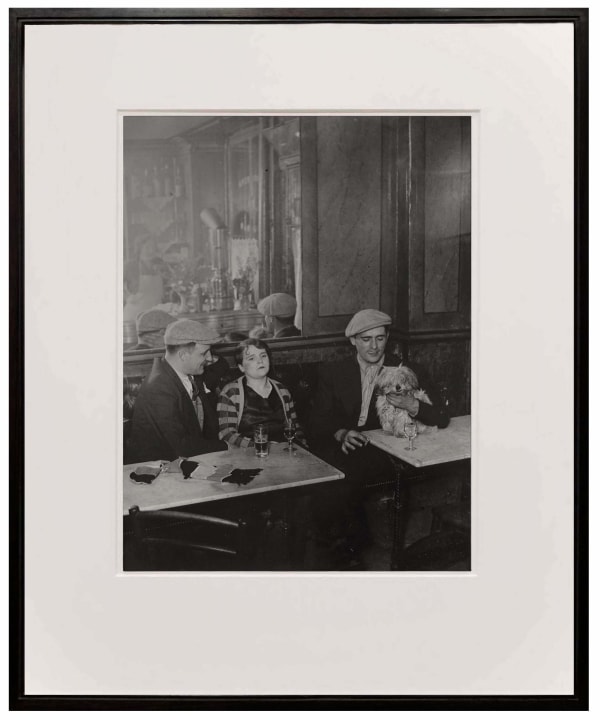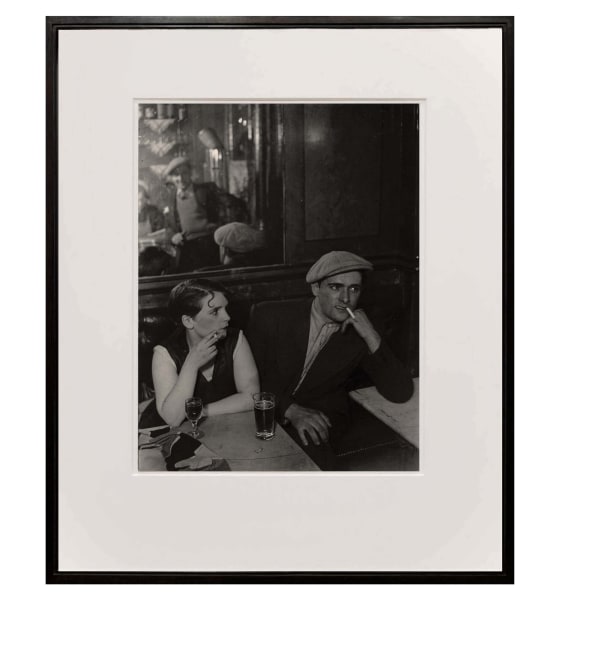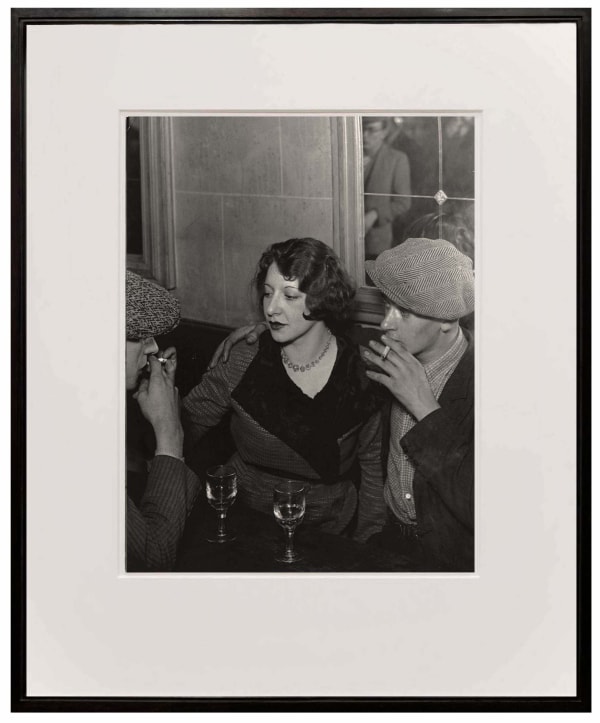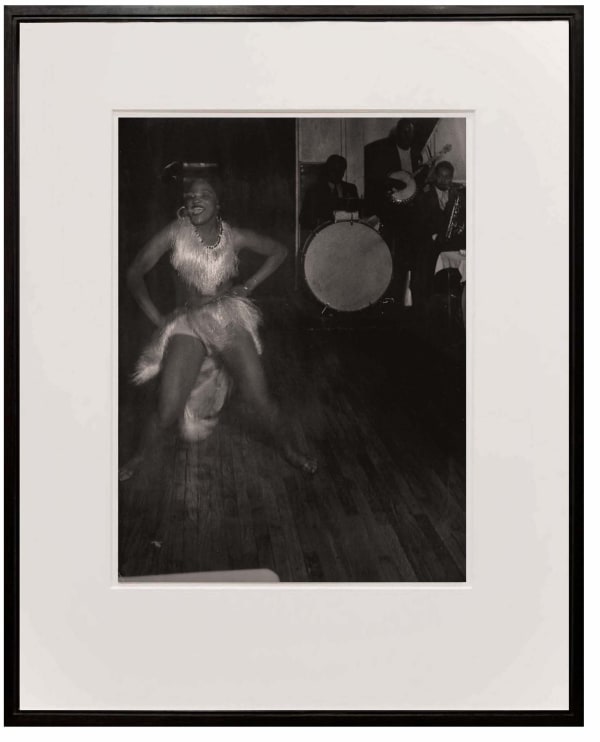-
 Brassaï et Gilberte, 1946
Brassaï et Gilberte, 1946 -
-
 La Môme Bijou, Bar de la Lune, Paris, c. 1932
La Môme Bijou, Bar de la Lune, Paris, c. 1932 -
Brassaï (1899 – 1984) was born Gyula Halász in the Transylvanian town of Brasso, Hungary (today Romania). After passing through Berlin, the artist moved to Paris in 1924. There, he adopted his pseudonym, which means “from Brasso,” and supported himself as a journalist. His acquisition of a camera in 1930, in addition to a friendship with fellow Hungarian artist André Kertész, led Brassaï to devote himself to photography. Retrospectives of the artist’s work have been organized at the Museum of Modern Art, New York; Centre Pompidou, Paris; Museum of Fine Arts, Houston; J. Paul Getty Museum, Los Angeles; National Gallery of Art, Washington, D.C.; and most recently at Fundación MAPFRE’s Barcelona gallery, Casa Garriga i Nogués.

